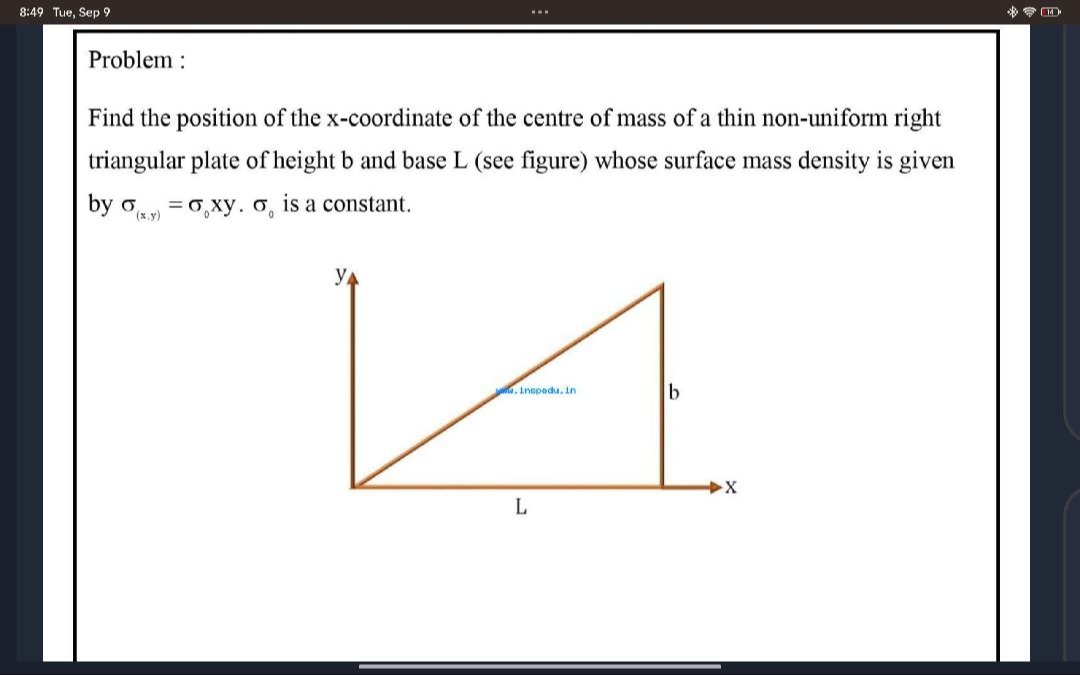Question
Question: Find the position of the x-coordinate of the centre of mass of a thin non-uniform right triangular p...
Find the position of the x-coordinate of the centre of mass of a thin non-uniform right triangular plate of height b and base L (see figure) whose surface mass density is given by σ(x,y)=σ0xy. σ0 is a constant.

3L
52L
2L
53L
52L
Solution
The x-coordinate of the center of mass (XCM) is given by XCM=∫dm∫xdm, where dm=σdA is the mass of an infinitesimal area element dA, and σ is the surface mass density. The triangular plate is defined by the vertices (0,0), (L,0), and (0,b). The equation of the hypotenuse is y=b(1−x/L). The surface mass density is given by σ(x,y)=σ0xy.
We can set up the integrals over the area of the triangle. For an element dA=dxdy, the limits of integration are 0≤x≤L and 0≤y≤b(1−x/L).
-
Calculate the total mass (M): M=∬AσdA=∫0L∫0b(1−x/L)σ0xydydx First, integrate with respect to y: ∫0b(1−x/L)σ0xydy=σ0x[2y2]0b(1−x/L)=σ0x2b2(1−Lx)2 Now, integrate with respect to x: M=∫0Lσ02b2x(1−Lx)2dx Let u=1−x/L, so x=L(1−u) and dx=−Ldu. When x=0, u=1; when x=L, u=0. M=σ02b2L2∫10(1−u)u2(−du)=σ02b2L2∫01(u2−u3)du M=σ02b2L2[3u3−4u4]01=σ02b2L2(31−41)=σ024b2L2
-
Calculate the moment about the y-axis (∫xdm): ∫xdm=∬AxσdA=∫0L∫0b(1−x/L)x(σ0xy)dydx =∫0Lσ0x2∫0b(1−x/L)ydydx First, integrate with respect to y: ∫0b(1−x/L)ydy=[2y2]0b(1−x/L)=2b2(1−Lx)2 Now, integrate with respect to x: ∫xdm=∫0Lσ0x22b2(1−Lx)2dx Using the substitution u=1−x/L: ∫xdm=σ02b2L3∫01(1−u)2u2du=σ02b2L3∫01(u2−2u3+u4)du ∫xdm=σ02b2L3[3u3−42u4+5u5]01=σ02b2L3(31−21+51) ∫xdm=σ02b2L3(3010−15+6)=σ060b2L3
-
Calculate XCM: XCM=M∫xdm=σ024b2L2σ060b2L3=60L3×L224=6024L=52L
